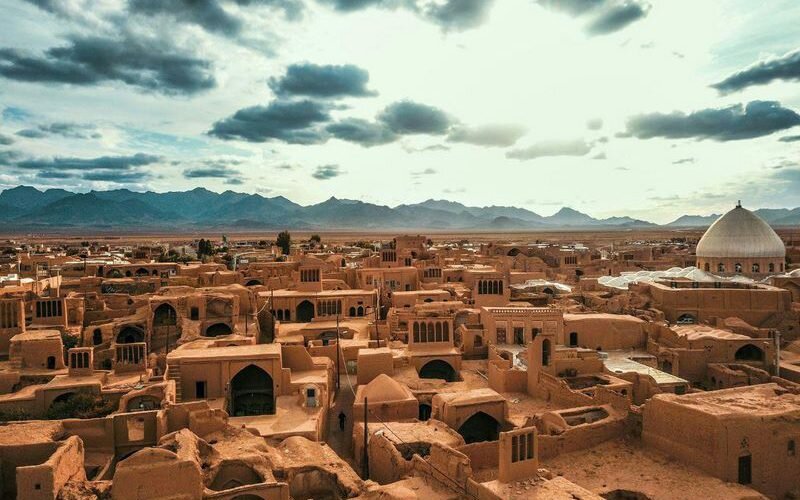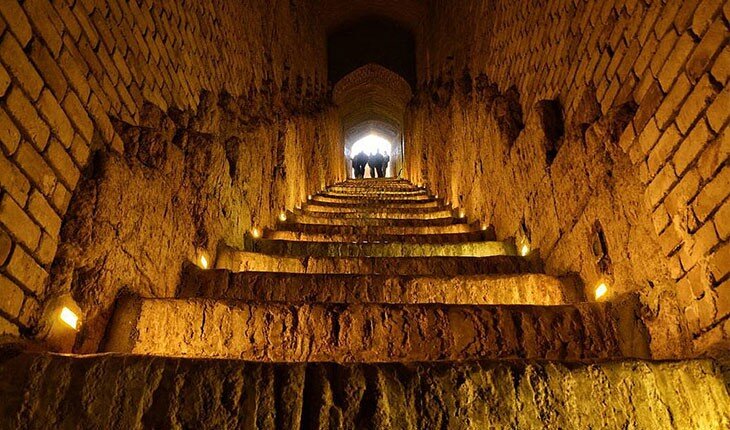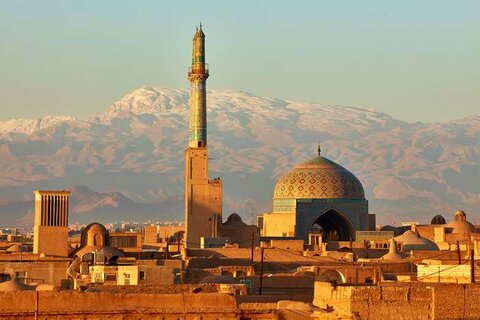Cultural Heritage, Tourism and Handicrafts Minister Ezzatollah Zarghami, Yazd province’s governor-general Mehran Fatemi, and several ambassadors and diplomats were among attendees of the event held at the UNESCO-designated Dowlat Abad Garden which is well-known for its high windcatcher.
“Yazd is the sole Iranian city registered as World Heritage by UNESCO,” Fatemi said, addressing the ceremony.
The governor-general cited several reasons for the registration, saying: “Yazd’s historical core is of very high importance… the existence of a large number of adobe houses in an area of 200 hectares and the continuity of life in these adobe and clay houses is one of the reasons for its UNESCO registration.”
“The second reason was an optimal use of energy due to the structure and texture of the historical houses.”
The official said the construction of wind towers and the digging of unique qanats (subterranean aqueducts) by the people of Yazd is important to distinguish this city from other historical cities of the world.
“A historical coexistence of followers of different religions, including Muslims, Zoroastrians, and Jews was the third reason for registering Yazd in the World Heritage list,” the official noted.
The tourism minister reminded attendees of the peaceful spirit of the people in Yazd, adding: “According to UNESCO, Yazd can be chosen as a model for peace in the world.”
“I have not seen anywhere like Yazd where its people are amazingly determined to support and preserve the historical core of their hometown,” Zarghami said.
People of Yazd highly appreciate 200 hectares of the historical core, which is surrounded by some 700 hectares of land, the minister said.
Earlier this year, Yazd’s tourism chief said over 500 historical monuments and sites underwent restoration in the province during the past Iranian calendar year which ended on March 20.

In addition, 24 historical sites and buildings underwent monitoring to gain a deeper understanding of how they react against natural forces, he added.
A total of 88,972 people visited museums and historical sites across the province last year, he said, adding “A cultural heritage museum opened to the public in the same period.”
In July 2017, the historical core of Yazd was named a UNESCO World Heritage. Yazd is regularly referred to as a delightful place to stay, or a “don’t miss” destination by almost all of its visitors. The city is full of mudbrick houses that are equipped with innovative badgirs (wind catchers), atmospheric alleyways, and many Islamic and Iranian monuments that shape its eye-catching city landscape.
Cultural heritage experts believe that Yazd is a living testimony to the intelligent use of limited available resources in the desert for survival. Water is brought to the city by the qanat system. Each district of the city is built on a qanat and has a communal center. Furthermore, the use of earth in buildings includes walls and roofs through the construction of vaults and domes. Houses are built with courtyards below ground level, serving underground areas. Wind-catchers, courtyards, and thick earthen walls create a pleasant microclimate.
The historical core of Yazd is chockfull of mudbrick houses, bazaars, public bathhouses, water cisterns, mosques, synagogues, Zoroastrian temples, and centuries-old gardens. From the divine point of view, the city enjoys the peaceful coexistence of three religions: Islam, Judaism, and Zoroastrianism.
Yazd is home to numerous qanats which have supplied water to agricultural and permanent settlements for thousands of years. The man-carved underground qanat system relies on snow-fed streams flowing down the foothills of surrounding mountains. The earliest water supply to Yazd is estimated to date from the Sassanid era (224 to 651 CE). However, many others have been continually repaired and used over time, and most surviving Ab-Anbars (traditional mudbrick cisterns) can be today traced to the late Safavid and Qajar periods.

Yazd Water Museum is a must-see destination for the ones interested to know about the brave men who built such underground aqueducts in the past. Located in a restored mansion with a visible qanat running underneath, the museum offers its visitors a fascinating glimpse into the hidden world of qanats through a series of photographs, exhibits, and architectural drawings. It represents nearly 2000 years of unique irrigation structure that has been in operation, yet describes the drilling of mother wells and associated underground water networks stretched to the ancient city.
Tehrantimes


Your Comment